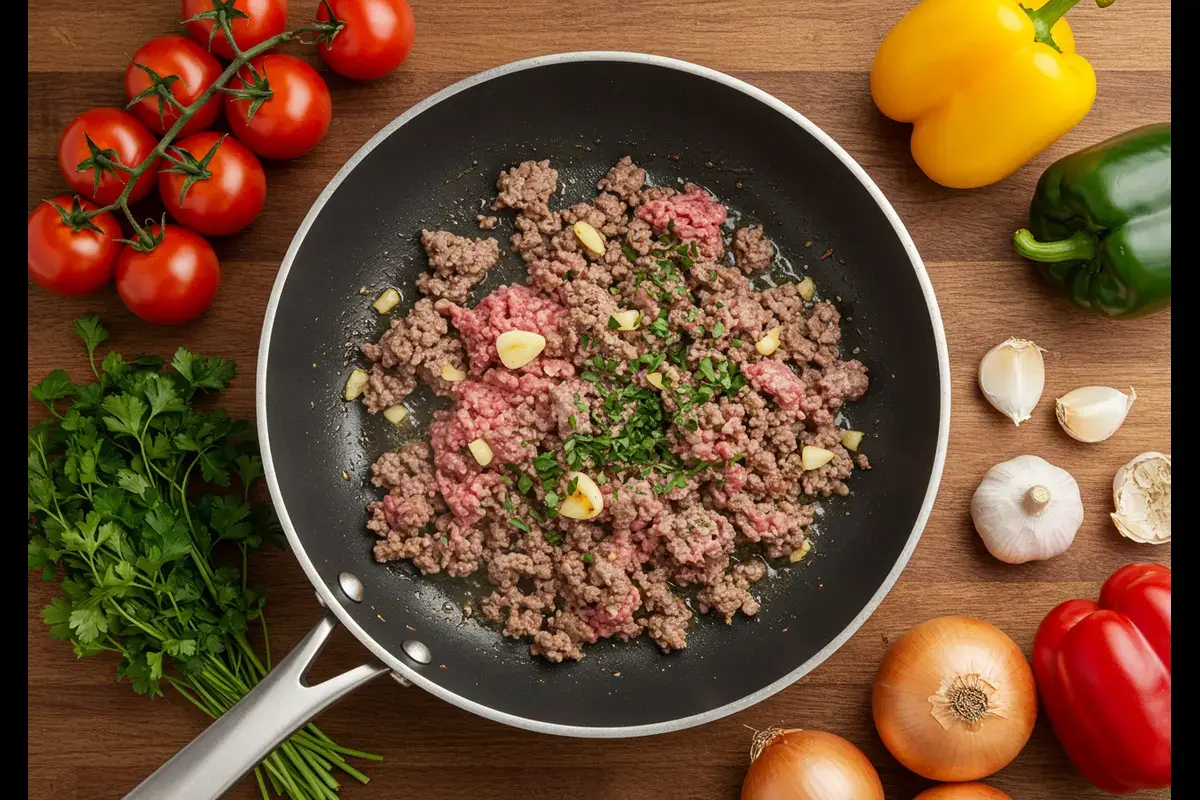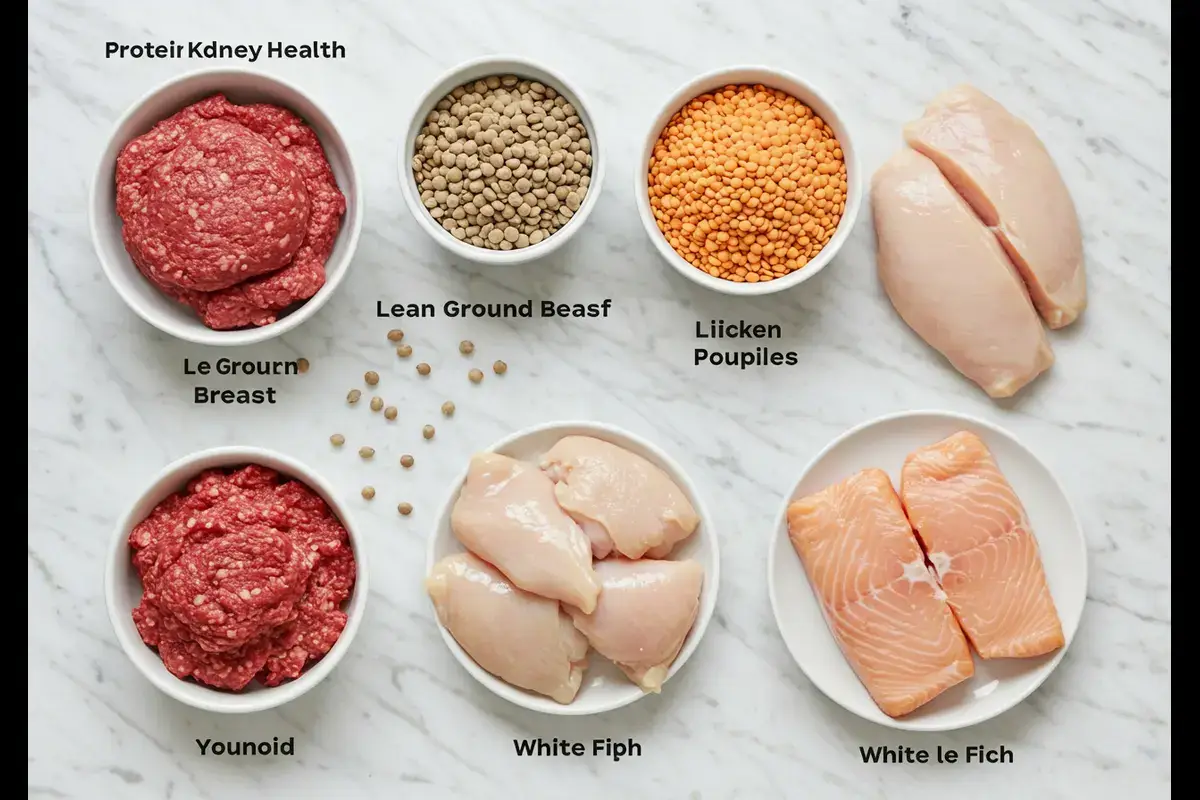When it comes to managing kidney disease, ground beef and kidney disease are often discussed together. Diet plays a pivotal role in supporting kidney health and slowing disease progression. Can ground beef fit into a kidney-friendly diet? What should you keep in mind when including it in your meals?
This article explores everything you need to know about ground beef and kidney disease, including dietary considerations, preparation tips, and alternative protein options. In addition, we’ll address common questions about eating meat with kidney disease.
Part 1: Understanding Ground Beef and Kidney Disease
What is Kidney Disease?
Kidney disease affects millions worldwide, and its impact on health can be profound. When your kidneys lose their ability to filter waste and regulate nutrients effectively, toxins build up in your blood. Thus, chronic kidney disease (CKD) progresses through stages, with later stages often requiring dialysis or a kidney transplant.
What you eat can significantly influence this progression. Diet choices directly impact kidney workload, waste buildup, and nutrient imbalances. For this reason, understanding these effects is key to managing the condition.
Why Diet Matters When Managing Ground Beef and Kidney Disease
Managing kidney disease involves more than just avoiding certain foods—it’s about choosing ones that promote kidney health. For instance:
- Phosphorus is a mineral found in many foods, including meat, and high levels can harm bones and speed up disease progression.
- Potassium levels can become dangerous if kidneys can’t regulate them properly.
- Sodium, often hidden in processed foods, can raise blood pressure and strain kidneys further.
Therefore, balancing these nutrients helps maintain your health and slows the deterioration of kidney function. However, a kidney-friendly diet is highly individualized—what works for one person may not work for another. That’s why consulting with a dietitian is essential for developing the best plan for your stage of CKD.
Part 2: Ground Beef and Kidney Disease in a Kidney-Friendly Diet
Nutritional Profile of Ground Beef for Kidney Health
Ground beef is a versatile ingredient packed with protein, essential for building and repairing tissues. However, for individuals with kidney disease, its nutrient composition warrants careful consideration. For example, ground beef contains significant amounts of phosphorus and potassium, minerals that can strain compromised kidneys. A 3-ounce serving of 85% lean ground beef typically provides about 200-250 milligrams of phosphorus and 300-350 milligrams of potassium.
The fat content also varies, with leaner options being more suitable for kidney-friendly diets. Additionally, high-fat cuts can contribute to cardiovascular risks, which are already elevated in kidney disease patients. Thus, selecting lean or extra-lean ground beef minimizes these risks while offering essential nutrients like iron and zinc.
Benefits and Drawbacks of Ground Beef for Kidney Disease Patients
Ground beef can fit into a kidney-friendly diet when consumed in moderation and prepared carefully. On the positive side:
- It provides a high-quality protein source, essential for individuals on dialysis who require more protein.
- Lean ground beef has less saturated fat, reducing cardiovascular strain.
However, challenges include:
- The risk of consuming excessive phosphorus and potassium.
- The presence of sodium and preservatives in processed ground beef products like frozen patties.
To minimize drawbacks, opt for fresh, minimally processed ground beef and adjust portion sizes based on your dietitian’s recommendations.
For more kidney-friendly meal inspiration, check out this guide on kidney-friendly ground beef meatloaf.
Nutritional Content of Ground Beef (Per 100g)
Understanding the nutritional breakdown of ground beef is essential for individuals managing kidney disease. This is because the levels of nutrients such as protein, phosphorus, and potassium can impact kidney health. Below is a table summarizing the key nutritional information for 85% lean ground beef:
| Nutrient | Amount per 100g | Relevance to Kidney Disease |
|---|---|---|
| Calories | 250 kcal | Energy-dense, should be consumed in moderation. |
| Protein | 26 g | Essential for tissue repair but requires portion control in CKD. |
| Fat | 17 g | Lean options are better to reduce saturated fat intake. |
| Phosphorus | 200 mg | High levels can strain kidneys; balance is key. |
| Potassium | 330 mg | Manageable in small servings; pair with low-potassium foods. |
| Sodium | 70 mg | Low in fresh beef, but higher in processed varieties. |
| Iron | 2.6 mg | Beneficial for preventing anemia. |
| Zinc | 5.4 mg | Supports immune function and wound healing. |
Explanation of Nutritional Content
Ground beef is nutrient-rich, providing high-quality protein and essential minerals like iron and zinc. However, it also contains significant amounts of phosphorus and potassium, which can challenge individuals with kidney disease. Thus, portion control and careful meal planning are critical.
Part 3: How to Incorporate Ground Beef Safely for Kidney Disease
Choosing the Right Type of Ground Beef for Kidney-Friendly Meals
Selecting the right type of ground beef is crucial for maintaining kidney health. For this reason, aim for options labeled “93% lean” or “extra lean” to limit saturated fat intake. Furthermore, always read labels carefully to ensure the product doesn’t contain added phosphorus or sodium—common in pre-seasoned or frozen ground beef.
In addition, when shopping, consider organic or grass-fed ground beef. These products often have fewer additives and are minimally processed, thus making them a safer choice for those managing ground beef and kidney disease.
Kidney-Friendly Cooking Methods for Ground Beef
The way you cook ground beef can make a significant difference in its healthfulness. To ensure optimal health:
- Grilling or broiling: Helps drain excess fat.
- Baking or roasting: Retains flavor without needing high-sodium seasonings.
- Sautéing in water or broth: Avoids added oils while enhancing taste.
On the other hand, avoid frying or using heavy sauces, which can introduce unnecessary fats and sodium. Instead, incorporate herbs like parsley, thyme, or oregano for flavor instead of salt-based spices.
Portion Control and Serving Suggestions for Ground Beef and Kidney Disease
Portion control is vital for keeping phosphorus and potassium levels in check. For example, most kidney-friendly diets recommend limiting meat portions to 3 ounces per meal, roughly the size of a deck of cards. Additionally, pair ground beef with low-potassium vegetables like green beans or cauliflower for a balanced, kidney-friendly plate.
For more creative ways to enjoy ground beef, try this burger bowl recipe that swaps buns for fresh greens!
Part 4: Alternative Proteins and Kidney Health
Plant-Based Proteins: A Better Alternative to Ground Beef?
For individuals managing kidney disease, plant-based proteins can be a fantastic alternative to animal proteins like ground beef. Unlike animal proteins, plant-based sources such as beans, lentils, tofu, and whole grains generally contain lower amounts of phosphorus. Moreover, only about 30% of the phosphorus in plant-based foods is absorbed by the body, compared to over 80% from animal proteins.
Plant-based proteins also offer additional benefits:
- Firstly, they are rich in fiber, which supports gut health and helps regulate blood sugar levels.
- Secondly, they contain heart-healthy fats, unlike the saturated fats found in some animal proteins.
However, moderation is key. Some plant-based proteins like nuts and seeds are high in potassium, which means they can be a concern depending on your stage of kidney disease. Therefore, always consult your dietitian to tailor your choices.
You can visit this recipe as an example.
Other Low-Phosphorus Proteins Besides Ground Beef
If you’re not ready to go fully plant-based, there are still excellent animal protein options that are lower in phosphorus and more kidney-friendly than ground beef. For example:
- Chicken breast: An unprocessed 3-ounce portion contains about 196 milligrams of phosphorus.
- White fish (like cod or tilapia): These options are lean, low in phosphorus, and easy to prepare.
- Shrimp: A kidney-friendly seafood choice with about 200 milligrams of phosphorus per 3 ounces.
On the other hand, avoid processed meats like sausage, bacon, and deli meats, which are high in sodium and often contain phosphorus additives.
For more recipe ideas, consider trying healthy ground chicken recipes, which are lighter alternatives to beef.
Part 5: FAQs About Ground Beef and Kidney Disease
Can You Eat Ground Beef with Kidney Disease?
Yes, you can eat ground beef with kidney disease, but moderation is essential. Therefore, choose lean or extra-lean options and avoid processed products with added sodium or phosphorus. Additionally, always pair it with low-potassium sides like green beans or rice to create a balanced meal.
What Meat is Easiest on the Kidneys?
Lean, unprocessed meats like chicken, turkey, and white fish are generally easier on the kidneys. Moreover, these options are lower in saturated fat and phosphorus compared to ground beef, making them a better choice for kidney health.
How Much Beef Can a Kidney Patient Eat?
Portion sizes should be kept small—around 3 ounces per meal—to avoid overloading your body with protein, phosphorus, and potassium. Furthermore, talk to your dietitian to determine the right amount for your specific needs.
Can Renal Patients Eat Burgers?
Renal patients can enjoy burgers if they are made with fresh, lean ground beef and prepared at home. On the other hand, store-bought or fast-food burgers often contain high amounts of sodium and phosphorus additives. Instead, pair your burger with a kidney-friendly salad rather than fries to keep the meal balanced.
For more ideas on kidney-friendly meals, explore our guide on making kidney-friendly meatloaf with ground beef.
Part 6: Managing a Kidney-Friendly Diet with Ground Beef
Working with a Dietitian to Include Ground Beef
When managing kidney disease, working with a dietitian can make all the difference. This is because every person’s nutritional needs are unique, especially when it comes to ground beef and kidney disease. A dietitian can:
- Help you determine safe portion sizes for proteins like ground beef.
- Teach you how to balance your meals to control phosphorus, potassium, and sodium intake.
- Offer advice on substitutions, like plant-based proteins or low-phosphorus meats.
Moreover, regular check-ins allow your dietitian to adjust recommendations based on your lab results and progression of kidney disease.
Meal Planning with Ground Beef and Kidney Health in Mind
Meal planning simplifies the process of sticking to a kidney-friendly diet. Here are some tips to make it easier:
- Batch Cooking: Prepare larger portions of meals that can be stored and reheated.
- Portion Out Proteins: Measure your servings of ground beef or other meats ahead of time.
- Focus on Fresh Ingredients: Avoid processed foods that may contain hidden phosphorus and sodium.
For recipe inspiration, consider trying simple, kidney-friendly dishes like a homemade ground beef bowl paired with low-potassium vegetables.
Part 7: Conclusion and Final Thoughts
When managing kidney disease, dietary choices play a key role in protecting your health and slowing disease progression. While ground beef can be included in your diet, it requires thoughtful planning to avoid excess phosphorus, potassium, and sodium. Therefore, choosing lean, unprocessed options and pairing them with low-potassium sides ensures a balanced, kidney-friendly meal.
Exploring alternatives, like plant-based proteins or lean meats such as chicken and fish, can diversify your meals while supporting kidney health. Remember, every choice matters, and even small adjustments can make a big difference.
By working closely with a dietitian and focusing on proper portion control, you can enjoy meals like ground beef while staying on track with your health goals. For more tips and recipe ideas, visit our full collection of kidney-friendly recipes to expand your meal options.
Part 8: Lifestyle Changes to Support Kidney Health
Importance of Hydration
Staying hydrated is vital for kidney health. This is because water helps flush out toxins and prevents the buildup of waste that can strain the kidneys. However, the amount of water you need depends on your specific condition. If your doctor advises fluid restrictions, monitor your intake carefully to avoid overhydrating.
When consuming dishes with ground beef, like stews or casseroles, remember that sauces and broths contribute to your overall fluid intake. Thus, balancing hydration is especially important for those with advanced kidney disease or on dialysis.
Managing Sodium Intake
Sodium is a major concern for people with kidney disease. For example, high-sodium foods can lead to fluid retention and high blood pressure, which place extra stress on the kidneys. Unfortunately, processed foods, including certain ground beef products, are common sources of hidden sodium.
To reduce sodium:
- Opt for fresh, unseasoned ground beef.
- Use herbs and spices like garlic, rosemary, or paprika for flavor instead of salt.
- Limit the use of store-bought marinades and sauces, which often contain high sodium levels.
When following this advice, you’ll find that ground beef and kidney disease management becomes more practical and enjoyable.
Part 9: Expanding Your Kidney-Friendly Recipe Repertoire
Creative Ways to Enjoy Ground Beef
Eating the same meals can get boring, but there are plenty of ways to include ground beef in kidney-friendly recipes without sacrificing flavor. For instance:
- Stuffed Bell Peppers: Use lean ground beef, rice, and low-potassium vegetables for a hearty dish.
- Homemade Beef Patties: Grill or bake patties seasoned with fresh herbs, and pair them with a side salad.
- Ground Beef and Veggie Stir-Fry: Toss lean ground beef with zucchini, carrots, and garlic in a light sauce.
By experimenting with these recipes, you can keep your diet varied while staying within kidney-friendly guidelines.
Incorporating Other Kidney-Friendly Proteins
While ground beef is versatile, incorporating other proteins can provide a balanced approach. For example, consider adding plant-based options like lentils or chickpeas to your meals for variety. Additionally, white meats such as chicken or turkey offer lower phosphorus alternatives. Rotating these options ensures a well-rounded diet.
For more meal ideas, explore recipes tailored for individuals with kidney disease on our website, like this kidney-friendly meatloaf.
Conclusion
Managing kidney disease can be challenging, but making informed dietary choices can significantly improve your quality of life. This guide on Ground Beef and Kidney Disease: What You Need to Know has shown that ground beef can be part of a kidney-friendly diet when consumed in moderation and prepared thoughtfully.
By opting for lean, unprocessed ground beef and incorporating low-phosphorus sides, you can enjoy meals that are both satisfying and supportive of kidney health. Exploring alternative protein sources like chicken, fish, and plant-based options ensures your meals remain varied and nutritious.
Working closely with a dietitian, planning your meals, and staying mindful of portion sizes can help you maintain a balanced diet while managing your condition. Remember, even small changes can make a big difference in supporting your kidneys and overall health.
For more tips, recipes, and guidance tailored to your needs, visit our comprehensive collection of kidney-friendly meal ideas. With the right knowledge and tools, you can enjoy flavorful meals while prioritizing your well-being.



